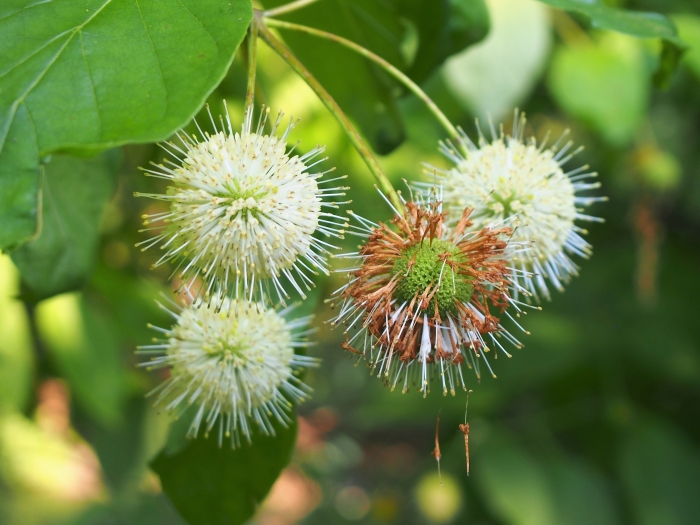Common Buttonbush
(Cephalanthus occidentalis)
Common Buttonbush (Cephalanthus occidentalis)
/
/

Agnieszka Kwiecień, Nova
CC BY-SA 4.0
























Estimated Native Range
Summary
Buttonbush thrives in full sun to part shade and prefers wet, poorly drained soils, making it ideal for rain gardens and naturalized wetland plantings. It is also used in butterfly gardens due to its appeal to various butterfly species. While it is tolerant of occasional flooding and standing water, it is less suitable for dry sites. Gardeners should be aware that Buttonbush can spread aggressively in optimal conditions, potentially becoming weedy. It is resistant to most pests and diseases but can suffer from leaf spot and rust.CC BY-SA 4.0
Plant Description
- Plant Type: Shrub
- Height: 3-8 feet
- Width: 3-8 feet
- Growth Rate: Moderate
- Flower Color: Cream, White
- Flowering Season: Summer, Fall
- Leaf Retention: Deciduous
Growth Requirements
- Sun: Full Sun, Part Shade
- Water: High
- Drainage: Medium, Slow
Common Uses
Bank Stabilization, Bee Garden, Bird Garden, Butterfly Garden, Deer Resistant, Erosion Control, Fire Resistant, Fragrant, Hummingbird Garden, Showy Flowers, Street Planting, Water Garden
Natural Habitat
Wetlands, including swamps, marshes, and along streams and lakes
Other Names
Common Names: Button-Willow , Buttonbush , Honey-Bells , Bollbuske
Scientific Names: Cephalanthus occidentalis , Cephalanthus occidentalis f. occidentalis , Cephalanthus occidentalis var. californicus , Cephalanthus occidentalis var. pubescens , Cephalanthus occidentalis subsp. californicus , Cephalanthus occidentalis f. lanceolatus , Cephalanthus occidentalis var. brachypodus , Cephalanthus hansenii , Cephalanthus acuminatus , Cephalanthus angustifolius
GBIF Accepted Name: Cephalanthus occidentalis L.